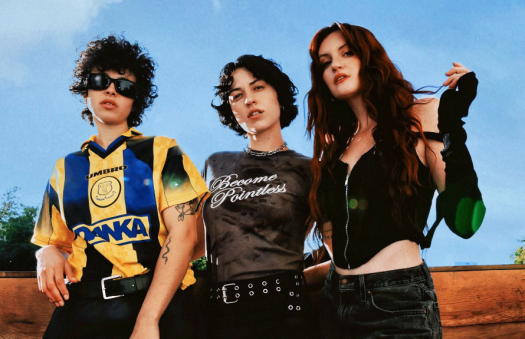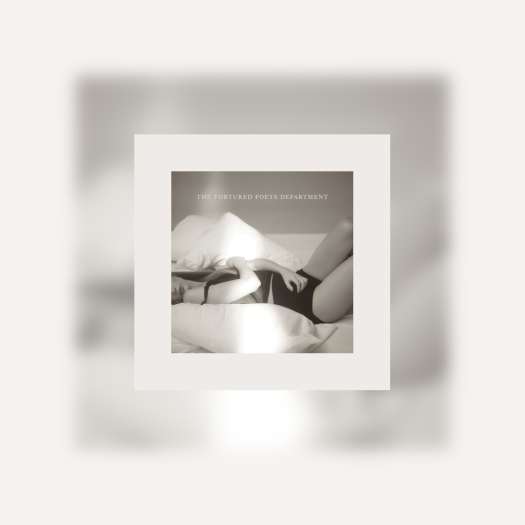Jason Amm has been making music under the name Solvent since the late '90s, releasing on Michigan's respected Ghostly International as well as his own Suction Records imprint. His 2011 RDJCS5 EP, an homage to Aphex Twin, was composed on a Yamaha CS5 mono-synth that once belonged to Richard D. James himself. However, the CS5 isn't the only vintage curiosity in this producer's impressive arsenal of hardware, lovingly crammed into his home studio in Toronto's west end.
Amm has been an avid collector of synths, drum machines and keyboards since he started buying and trading equipment as a teenager in the late '80s. Partly due to his recent involvement in I Dream of Wires — a documentary charting the resurgence of the modular synth — the longtime synth aficionado has become more deeply interested in modular technology himself. "The thing with modular," explains Amm, "is that a lot of people who get into it, who maybe come from a background of making music on regular synths, can get carried away with the endless possibilities — the fact that you can just sit in front of it and meditate and get the craziest sounds." Some of those sounds can be hard to incorporate into music because they are just so "out there," according to Amm; the exploration of modular synthesis can become an activity in and of itself, which can soon turn into an addictive, time-consuming hobby. "I had always wanted to get into modular synths but a hesitation I always had was that I can get obsessive. I was worried that this was a path that I could easily go down where it would become about the process more than making music."
Amm's motivation for getting into modular synths, and the producer's way to guarantee he didn't go too far down the rabbit hole, was to use the technology to make the I Dream of Wires soundtrack. He now has his own burgeoning Eurorack system — the dominant format for new modular synths — as part of his home studio set-up. "It's the same components that are within a regular synthesizer but it's customizable," Amm explains. "The first synthesizers ever made were modular format as well. We have the idea hard-wired that synthesisers go along with keyboards, but they didn't start off with keyboard-based synths." When modular synths first emerged, they were very much tied to the idea of electronic music being merely experimental lab music that you would create by recording and splicing together bits with tape. "It was an idea that the times weren't ready for," adds Amm "On a Beatles record, they could find a place for some weird noise, but overall there weren't whole forms of music that could make use of these atonal sounds that had an audience of more than 30 people."
One thing Amm wants to make clear about the growing interest in modular synths is the misconception that it is somehow a retro fad. "What's going on now is the opposite of retro. This is not a system for making Tangerine Dream music — this has strange, cutting-edge digital components that sound the opposite of retro. It doesn't sound familiar at all."
One of the aspects of the technology that attracted Amm was that it is the first place in a long time where you can hear something that sounds fresh in an aurally-saturated world where new sounds are hard to come by. "I have been very obsessed with retro for a long time," says Amm. "I've been stuck in the early '80s and I was a real purist about it. I'm now gravitating towards the modular because I think that it has actually taken my music in a less retro direction. Most people would expect the opposite, especially as a lot of my past music was an exercise in retro-ism or at least revisiting a way of working I felt had been lost."
Now that the '80s synth-pop revival has had its recent time in the sun, restoring the genre's reputation in the public eye, Amm is finding his music gravitating back towards more abstract and forward-thinking music and sound design that first inspired him, including the music on labels such as Raster-Noton. "You could, if you wanted, build a modular system where you have nothing but components that mimic vintage Moog-style stuff or if you make harsh, crazy digital noise, you could buy only components like that. It's a choose-your-own-adventure really."
Amm has been an avid collector of synths, drum machines and keyboards since he started buying and trading equipment as a teenager in the late '80s. Partly due to his recent involvement in I Dream of Wires — a documentary charting the resurgence of the modular synth — the longtime synth aficionado has become more deeply interested in modular technology himself. "The thing with modular," explains Amm, "is that a lot of people who get into it, who maybe come from a background of making music on regular synths, can get carried away with the endless possibilities — the fact that you can just sit in front of it and meditate and get the craziest sounds." Some of those sounds can be hard to incorporate into music because they are just so "out there," according to Amm; the exploration of modular synthesis can become an activity in and of itself, which can soon turn into an addictive, time-consuming hobby. "I had always wanted to get into modular synths but a hesitation I always had was that I can get obsessive. I was worried that this was a path that I could easily go down where it would become about the process more than making music."
Amm's motivation for getting into modular synths, and the producer's way to guarantee he didn't go too far down the rabbit hole, was to use the technology to make the I Dream of Wires soundtrack. He now has his own burgeoning Eurorack system — the dominant format for new modular synths — as part of his home studio set-up. "It's the same components that are within a regular synthesizer but it's customizable," Amm explains. "The first synthesizers ever made were modular format as well. We have the idea hard-wired that synthesisers go along with keyboards, but they didn't start off with keyboard-based synths." When modular synths first emerged, they were very much tied to the idea of electronic music being merely experimental lab music that you would create by recording and splicing together bits with tape. "It was an idea that the times weren't ready for," adds Amm "On a Beatles record, they could find a place for some weird noise, but overall there weren't whole forms of music that could make use of these atonal sounds that had an audience of more than 30 people."
One thing Amm wants to make clear about the growing interest in modular synths is the misconception that it is somehow a retro fad. "What's going on now is the opposite of retro. This is not a system for making Tangerine Dream music — this has strange, cutting-edge digital components that sound the opposite of retro. It doesn't sound familiar at all."
One of the aspects of the technology that attracted Amm was that it is the first place in a long time where you can hear something that sounds fresh in an aurally-saturated world where new sounds are hard to come by. "I have been very obsessed with retro for a long time," says Amm. "I've been stuck in the early '80s and I was a real purist about it. I'm now gravitating towards the modular because I think that it has actually taken my music in a less retro direction. Most people would expect the opposite, especially as a lot of my past music was an exercise in retro-ism or at least revisiting a way of working I felt had been lost."
Now that the '80s synth-pop revival has had its recent time in the sun, restoring the genre's reputation in the public eye, Amm is finding his music gravitating back towards more abstract and forward-thinking music and sound design that first inspired him, including the music on labels such as Raster-Noton. "You could, if you wanted, build a modular system where you have nothing but components that mimic vintage Moog-style stuff or if you make harsh, crazy digital noise, you could buy only components like that. It's a choose-your-own-adventure really."




